Is the Catch Can necessary
#21
True, but every engine is different. Just like early 3.8s were prone to fuel injector clogging, even though it wasn't close to the first engine with fuel injection. Thus the pickups will be the true test for if Vette owners have anything to worry about.
#22
Safety Car


If you have a Z51 pull your air bridge and filter and see what is in there. You may be unpleasantly surprised. I had oil puddled in there at ~1500 miles with normal break in.
99% sure the sump tank is burping as that pcv hose is very oily.
We'll see what it looks like at the next oil change.
99% sure the sump tank is burping as that pcv hose is very oily.
We'll see what it looks like at the next oil change.
#23
Race Director


Member Since: Sep 2013
Location: Ft Lauderdale
Posts: 10,471
Received 974 Likes
on
506 Posts
Tech Contributor

A catch can has nothing to do with z51 burping.....that is a situation easily solved by lowering the reservoir oil level a bit or installing a clean side seperator.
Last edited by Glen e; 07-03-2014 at 09:11 PM.
#24
Safety Car


Regardless these cars should not be having oil in the intake bridge like some of them are.
#25
Intermediate


As LDB correctly pointed out GM didn't just invent the DI engine. The new GM engines aren't the canary. Diesels have been DI forever, and they don't have catch cans, and they don't have the problems the internet engineers keep yelling The Sky Is Falling about.
It's kinda like the internet oil engineers that say you must change your oil a lot more frequently than the DIC says. It can't hurt, except to your wallet. I'll spend my money on things that matter. YMMV.
It's kinda like the internet oil engineers that say you must change your oil a lot more frequently than the DIC says. It can't hurt, except to your wallet. I'll spend my money on things that matter. YMMV.
#26
GM put quite a bit of engineering into the system and I think a clean side separator is actually pretty ghetto and has no place on this car. Initial problems seem to be an incorrect hot level spec combined with people / dealer mechanics not knowing how to correctly check a dry sump system.
I can see the value in a dirty side catch can and may even install one but the clean side bandaid won't come within 10 feet of my engine compartment as I'm perfectly capable of properly measuring the oil level in a dry sump.......
One more comment on the new 2 outlet catch cans, people spend hundreds, sometimes thousands on CAI's with smooth internals to minimize turbulence then the catch can vendors come along and tell you to drill a hole and shove a 1" hose barb into the intake air path 4" away from the throttle body. These "performance" vendors need to get on the same page or at least come up with a hose tap that's flat on the inside so they can not be in conflict with the CAI's sold on other pages on their websites.......
#27
Pro


The Elite website in describing the operation of their catch-can states that the air flow is slowed to separate the oil from the air before it reaches the IM. Slowing the air flow and allowing it to flow through a catch-can located a couple of feet from the engine will also lower the temperature of the air once it hits the IM.
GM spent millions developing the new PCV system.
Catch-can vendors spent nothing testing their catch-cans on the LT1 or EcoTec3. They are simply stating historical seat of the pants experience and pointing to a few ounces of oil in the catch-can as evidence that it is improving the operation of a newly developed PCV system.
I already laid down $70,000 believing GM did an excellent job engineering this new vehicle and engine; I don't think I want to add a device that will alter the performance of any systems on that vehicle unless there is absolute proof there will be an improvement and there will be no down-sides.
#28
Melting Slicks


3,000 miles on my Z51, and many of those above 5,000 RPM. Just installed ported TB and AFE intake. Stock intake was dry as a bone. Put a flash light in the intake manifold and same, perfectly dry. I run my oil level 1/2 way on the checkered part of the dip stick. Don't overfill your tank and you should be good to go.
Now if I get courage to install a Procharger, might have to reconsider...
Now if I get courage to install a Procharger, might have to reconsider...
#29
Drifting


I installed a catch can right after I installed my ECS blower back in March. I empty it every 5k miles when I change my oil. I'd rather have it collect somewhere that I can remove it than to go right back into my engine.
#30
Racer


Thread Starter
Maybe...maybe not. There is no evidence or even comments about the effect a catch-can will have on the patent pending PCV system developed by GM for the LT1 and EcoTec3.
The Elite website in describing the operation of their catch-can states that the air flow is slowed to separate the oil from the air before it reaches the IM. Slowing the air flow and allowing it to flow through a catch-can located a couple of feet from the engine will also lower the temperature of the air once it hits the IM.
GM spent millions developing the new PCV system.
Catch-can vendors spent nothing testing their catch-cans on the LT1 or EcoTec3. They are simply stating historical seat of the pants experience and pointing to a few ounces of oil in the catch-can as evidence that it is improving the operation of a newly developed PCV system.
I already laid down $70,000 believing GM did an excellent job engineering this new vehicle and engine; I don't think I want to add a device that will alter the performance of any systems on that vehicle unless there is absolute proof there will be an improvement and there will be no down-sides.
The Elite website in describing the operation of their catch-can states that the air flow is slowed to separate the oil from the air before it reaches the IM. Slowing the air flow and allowing it to flow through a catch-can located a couple of feet from the engine will also lower the temperature of the air once it hits the IM.
GM spent millions developing the new PCV system.
Catch-can vendors spent nothing testing their catch-cans on the LT1 or EcoTec3. They are simply stating historical seat of the pants experience and pointing to a few ounces of oil in the catch-can as evidence that it is improving the operation of a newly developed PCV system.
I already laid down $70,000 believing GM did an excellent job engineering this new vehicle and engine; I don't think I want to add a device that will alter the performance of any systems on that vehicle unless there is absolute proof there will be an improvement and there will be no down-sides.
HAPPY 4TH
#31
Drifting


I am the OP. You saw the pictures of the oil in Catch Can after 300 miles. My question to everyone is where would that oil be if not caught in the can? Yes, that's right in the Intake Manifold and then on to the valves where it will cause problems. Installing a Catch Can can't cause any problems, but certainly can eliminate some. I would like a GM tech to chime in and give us his or her opinion. I would really like to know the real truth to this, not just our opinions.
HAPPY 4TH
HAPPY 4TH
#32
Racer


Thread Starter
Unless you choose to believe Glen E is a liar, you already have GM’s opinion in post #3, and it agrees with several of the other posts in this thread. Essentially all the PCV-related oil blows harmlessly past the valves and burns in the cylinders along with the fuel. This has been happening harmlessly since PCV systems were first used in the 1960’s. Can there be problems if the engine has worn or shoddy rings, leading to an unusually large amount of blow-by? Sure. But not in a healthy engine. The only thing of potential significance that is different with the C7 is direct injection, so that there is no longer gas “washing” the intake valve. But if that was a problem, you’d expect to see catch cans routinely used in diesels, all of which are direct injection, or in at least some of the direct injection gas engines. Since they aren’t used either place, the logical conclusion is that either there isn’t much coking from PCV-related oil, or to whatever extent a bit of coking may try to start, there’s enough detergent in the oil to prevent it from being a problem.
I'm a retired Yacht Captain and have seen Catch cans on GM Detroit Diesels, that means nothing in our case, just saying.
The very best mechanic I know was shocked at the amount of oil that is collected in the can. My concern and only concern is the Direct engine doesn't have gas washing off the oil on the valves.
#33
Racer


Thread Starter
Some tech info for the C7 Stingray owners. Most vette owners that have had a C5 or C6 know well the oil ingestion issues, but since GM has now gone DI with all it's engines, this becomes pretty serious as far as the care and feeding of the new C7.
The detonation and carbon deposits most probably already know about, so we will focus on the brand new issue of Direct injection.
Most can remember seeing the placards on a Shell/Mobil/Chevron fuel pump with the dirty and clean intake valves, well these are accurate and not just marketing. In the past, the detergent additives of the top tier fuels kept deposits from forming on intake valves as with the port injection engines the injectors kept a constant spray of fuel showering the valves so we never had to wory aoubt intake valve coking:
Direct injection has a ton of technical improvements over port injection such as allowing greater power to made from a higher compression ratio (11.5:1 vs 10.2:1 port injection) as the fuel is only introduced into the combustion chamber during the final 20-30% of the compression stroke, we no longer have as high of a probability of detonation (pre-ignition) from a hot spot like carbed or port injection. Also, since the pressure the fuel is delivered to the injector is 2,000-3,000 PSI atomization is far better and now fuel injectors never have a chance to build up deposits. This also results in better fuel economy, and more.
The one downside the industry did not anticipate is now since the fuel never touches the intake valves, the oil present in the PCV vapors bakes on to, or "Cokes" the intake valves resulting in a degradation in power and MPG in as little as 10-15k miles since no fuel ever touches the intake valves:
This is NOT a GM only issue, it affects every make/model of DI 4 stroke engine including motorcycles, outboards, and snowmobiles. Some more than others as you can see in this link of photos from techs all over the world:
GM has made great strides in the much improved baffles in both the valve covers and the valley cover where the crankcase dirty side is evacuated through, but there is still a ton of oil entering the intake air charge from 2 points.
The detonation and carbon deposits most probably already know about, so we will focus on the brand new issue of Direct injection.
Most can remember seeing the placards on a Shell/Mobil/Chevron fuel pump with the dirty and clean intake valves, well these are accurate and not just marketing. In the past, the detergent additives of the top tier fuels kept deposits from forming on intake valves as with the port injection engines the injectors kept a constant spray of fuel showering the valves so we never had to wory aoubt intake valve coking:
Direct injection has a ton of technical improvements over port injection such as allowing greater power to made from a higher compression ratio (11.5:1 vs 10.2:1 port injection) as the fuel is only introduced into the combustion chamber during the final 20-30% of the compression stroke, we no longer have as high of a probability of detonation (pre-ignition) from a hot spot like carbed or port injection. Also, since the pressure the fuel is delivered to the injector is 2,000-3,000 PSI atomization is far better and now fuel injectors never have a chance to build up deposits. This also results in better fuel economy, and more.
The one downside the industry did not anticipate is now since the fuel never touches the intake valves, the oil present in the PCV vapors bakes on to, or "Cokes" the intake valves resulting in a degradation in power and MPG in as little as 10-15k miles since no fuel ever touches the intake valves:
This is NOT a GM only issue, it affects every make/model of DI 4 stroke engine including motorcycles, outboards, and snowmobiles. Some more than others as you can see in this link of photos from techs all over the world:
GM has made great strides in the much improved baffles in both the valve covers and the valley cover where the crankcase dirty side is evacuated through, but there is still a ton of oil entering the intake air charge from 2 points.
Last edited by v8capt; 07-04-2014 at 02:02 PM.
#34
(the engine in the pic is a typical Colt V10 4.2 model and puts out around 500,000 foot pounds of torque when those twin turbos come on full boost)"

Last edited by C7_FlyBy; 07-04-2014 at 02:35 PM.
#35
Safety Car


Member Since: Mar 2009
Location: Northeast MA & Mad Beach FL
Posts: 4,101
Received 716 Likes
on
436 Posts

There definitely seems to be 2 sides to this.
IMO, the catch can seems to do something that helps.
But all the Factory cars out there for years and years without catch cans and without DI seem to have been able to run for hundred of thousands of mile without a problem.
Now that DI is being used wide spread, are we to think the manufacturers didn't know this problem of the valves not being cleaned by the fuel was going to cause major problems and did nothing about it ?
Do you think anyone driving a car now with DI and no catch can is only going to get 10-15K miles out of their motor before it has Major problems and has to be dealt with
If we're to believe GM tested the C7 engine for Endless hours upon hours, are we to think they did not have this serious problem during testing.
And if GM did have this problem, which is what some are saying is going to happen without a catch can, GM just said the hell with it, let the customers buy catch cans, or bring their car back and get it fixed after 15K miles
It all sounds great and everyone should have a catch can on their motor.
But are the Manufacturers that stupid that if this was a serious problem that definitely has to be dealt with that they would not deal with it.
No offense towards anyone ....
and I don't claim to know what I'm talking about, but if this is such a serious problem ... ??
Why wouldn't the manufacturers simply put a catch can on all the motors and just route a drain line off the Catch can back into the oil supply.
Then us consumers would not have to empty the catch can
Problem solved

IMO, the catch can seems to do something that helps.
But all the Factory cars out there for years and years without catch cans and without DI seem to have been able to run for hundred of thousands of mile without a problem.
Now that DI is being used wide spread, are we to think the manufacturers didn't know this problem of the valves not being cleaned by the fuel was going to cause major problems and did nothing about it ?
Do you think anyone driving a car now with DI and no catch can is only going to get 10-15K miles out of their motor before it has Major problems and has to be dealt with

If we're to believe GM tested the C7 engine for Endless hours upon hours, are we to think they did not have this serious problem during testing.
And if GM did have this problem, which is what some are saying is going to happen without a catch can, GM just said the hell with it, let the customers buy catch cans, or bring their car back and get it fixed after 15K miles

It all sounds great and everyone should have a catch can on their motor.
But are the Manufacturers that stupid that if this was a serious problem that definitely has to be dealt with that they would not deal with it.
No offense towards anyone ....
and I don't claim to know what I'm talking about, but if this is such a serious problem ... ??
Why wouldn't the manufacturers simply put a catch can on all the motors and just route a drain line off the Catch can back into the oil supply.
Then us consumers would not have to empty the catch can

Problem solved


Last edited by Dif; 07-04-2014 at 03:07 PM.
#36
Le Mans Master




There definitely seems to be 2 sides to this.
IMO, the catch can seems to do something that helps.
But all the Factory cars out there for years and years without catch cans and without DI seem to have been able to run for hundred of thousands of mile without a problem.
Now that DI is being used wide spread, are we to think the manufacturers didn't know this problem of the valves not being cleaned by the fuel was going to cause major problems and did nothing about it ?
Do you think anyone driving a car now with DI and no catch can is only going to get 10-15K miles out of their motor before it has Major problems and has to be dealt with
If we're to believe GM tested the C7 engine for Endless hours upon hours, are we to think they did not have this serious problem during testing.
And if GM did have this problem, which is what some are saying is going to happen without a catch can, GM just said the hell with it, let the customers buy catch cans, or bring their car back and get it fixed after 15K miles
It all sounds great and everyone should have a catch can on their motor.
But are the Manufacturers that stupid that if this was a serious problem that definitely has to be dealt with that they would not deal with it.
No offense towards anyone ....
and I don't claim to know what I'm talking about, but if this is such a serious problem ... ??
Why wouldn't the manufacturers simply put a catch can on all the motors and just route a drain line off the Catch can back into the oil supply.
Then us consumers would not have to empty the catch can
Problem solved

IMO, the catch can seems to do something that helps.
But all the Factory cars out there for years and years without catch cans and without DI seem to have been able to run for hundred of thousands of mile without a problem.
Now that DI is being used wide spread, are we to think the manufacturers didn't know this problem of the valves not being cleaned by the fuel was going to cause major problems and did nothing about it ?
Do you think anyone driving a car now with DI and no catch can is only going to get 10-15K miles out of their motor before it has Major problems and has to be dealt with

If we're to believe GM tested the C7 engine for Endless hours upon hours, are we to think they did not have this serious problem during testing.
And if GM did have this problem, which is what some are saying is going to happen without a catch can, GM just said the hell with it, let the customers buy catch cans, or bring their car back and get it fixed after 15K miles

It all sounds great and everyone should have a catch can on their motor.
But are the Manufacturers that stupid that if this was a serious problem that definitely has to be dealt with that they would not deal with it.
No offense towards anyone ....
and I don't claim to know what I'm talking about, but if this is such a serious problem ... ??
Why wouldn't the manufacturers simply put a catch can on all the motors and just route a drain line off the Catch can back into the oil supply.
Then us consumers would not have to empty the catch can

Problem solved


My point is that GM may be aware of an oil deposit build up, and that it will take thousands of miles for it to be a "issue". I have seen many valves from direct injection engines caked with burned oil deposits. These engines had 150K to 250k miles of use. I don't believe the sky is falling,
but I feel more at ease.
Heck, my 2008 Z06 had 16 lifters, a new camshaft
(at 26,000 miles) steering rack, A/C pump, 3 seat motors replaced and I hated to trade it for my C7.
#37
Supporting Vendor
Member Since: Aug 2003
Location: Beautiful CO
Posts: 3,640
Likes: 0
Received 6 Likes
on
3 Posts
St. jude Donor '14

A simple Google search shows the issues of intake valve coking on ALL DI engines, no auto maker is immune:
https://www.google.com/search?q=Inta...ction&tbm=isch
Studying many of the 2014 GM DI V8's shows the issue is just as severe as the rest:
And the others showing pictures of their LT1's with very few miles (these are links for a forum):
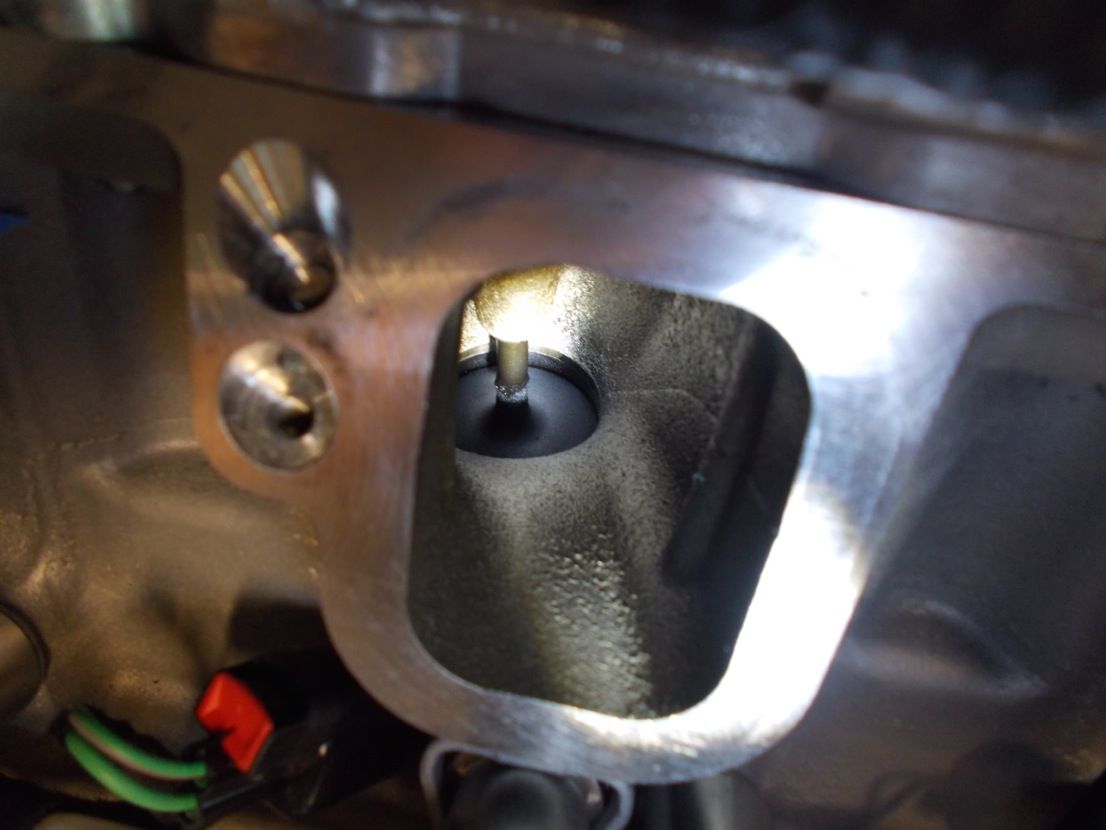
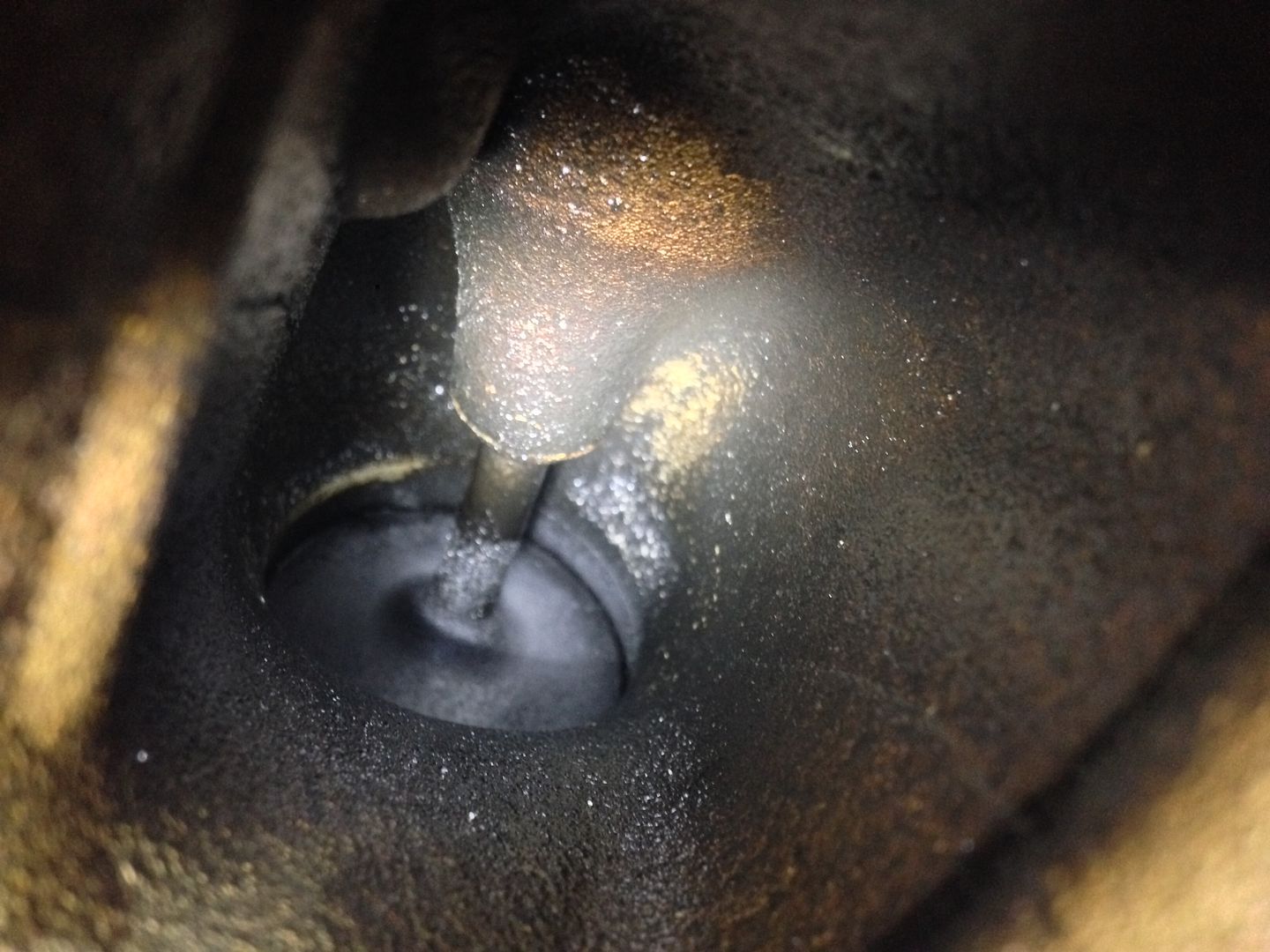
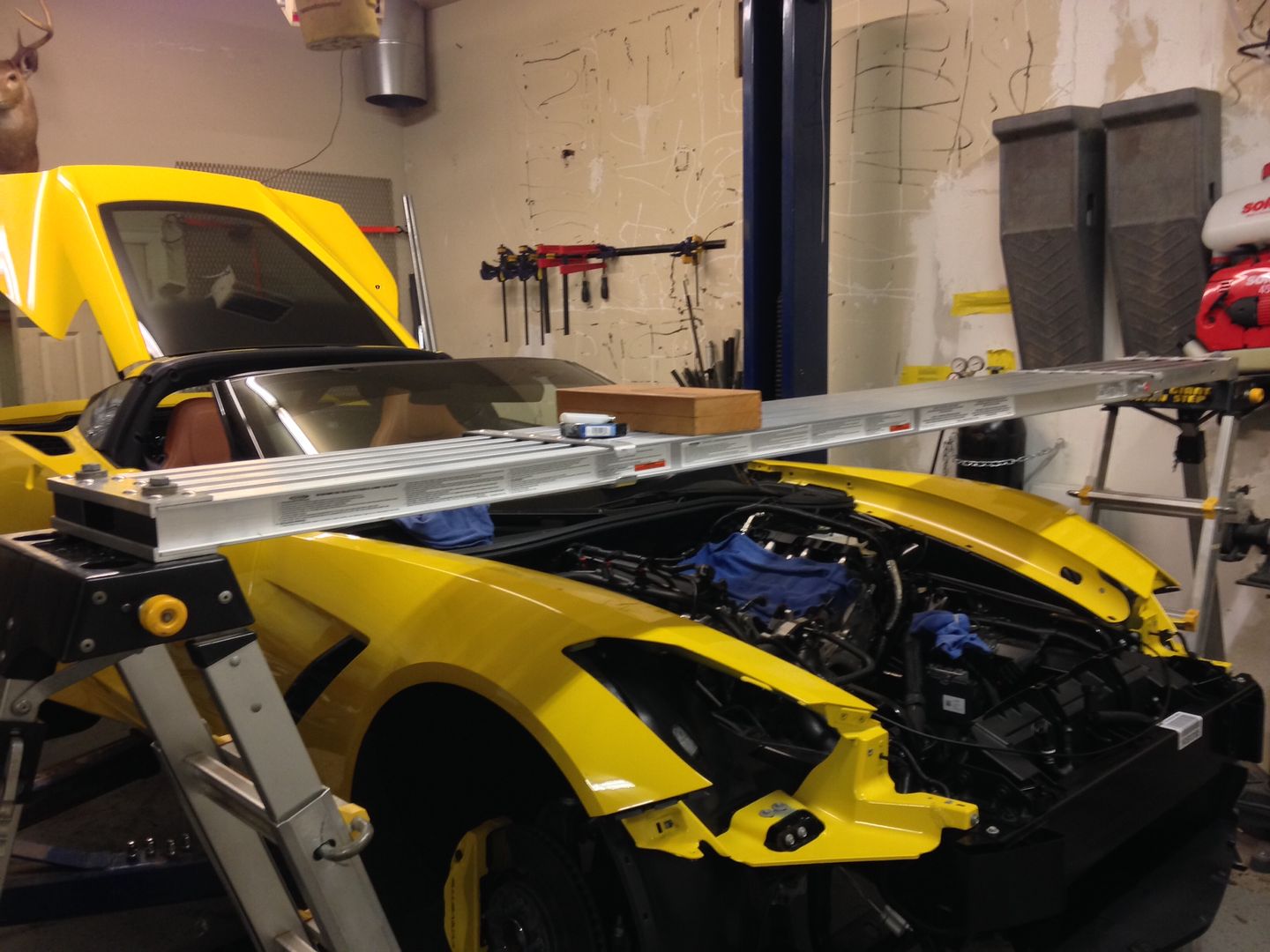
BMW and all GM v6 DI engines:

And the simple illustrations of port injection vs direct injection:
Port injection the intake valve were constantly showered in fuel and prevented deposits for 100's of thousands of miles:
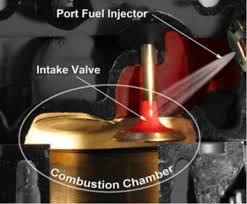
Direct injection no fuel touches the valves:
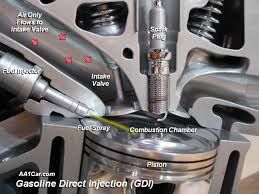
We invite anyone with a GM DI V8 to have their valves inspected to see personally how severe the issue is instead of arguing w/out facts or listening to a PR talking head that claims there is no issue (like the ignition switches for 10 years, and want to point out NO auto maker in the world admits to this issue, but the facts show otherwise.
And while GM has done a great job in the latest baffle design, no car maker can make a separation system that is more than 20-30% effective without then also capturing and retaining in the crankcase the damaging combustion by-products that are critical to evacuate and remove as soon as they enter the crankcase.
https://www.google.com/search?q=Inta...ction&tbm=isch
Studying many of the 2014 GM DI V8's shows the issue is just as severe as the rest:
And the others showing pictures of their LT1's with very few miles (these are links for a forum):



BMW and all GM v6 DI engines:

And the simple illustrations of port injection vs direct injection:
Port injection the intake valve were constantly showered in fuel and prevented deposits for 100's of thousands of miles:

Direct injection no fuel touches the valves:

We invite anyone with a GM DI V8 to have their valves inspected to see personally how severe the issue is instead of arguing w/out facts or listening to a PR talking head that claims there is no issue (like the ignition switches for 10 years, and want to point out NO auto maker in the world admits to this issue, but the facts show otherwise.
And while GM has done a great job in the latest baffle design, no car maker can make a separation system that is more than 20-30% effective without then also capturing and retaining in the crankcase the damaging combustion by-products that are critical to evacuate and remove as soon as they enter the crankcase.
#39
Drifting


The difficulty with the Elite Engineering post, as well as with others I’ve seen, is that while they document that deposits can form, they do not document the cause/effect link that the problem came from PCV, nor do they document whether a catch can would reduce or eliminate the problem. Other things could be causing the problem, from dry sump reservoir burps, to poorly designed injector timing and/or patterns that get some gas on the valves before they close, to poorly designed EGR systems, to damaged rings with resulting very high blowby rates. And even if it is the PCV system, are we to believe that the catch can removes all the potential bad actors from PCV vapors? I concede that neither I nor anyone else has all the answers. But a whole lot of very bright people with a whole lot of car companies have doubtlessly spent a whole lot of time looking at this issue, and there is still the huge reality check issue that even though they would be very cheap to install on the assembly line, none of them have chosen to install catch cans. So until or unless I see intake valve pictures of two engines driven under the same conditions (or better yet from an engine test cell where we know they are identical conditions) one engine with and one without a catch can, with the catch can engine substantially cleaner, I’ll remain skeptical.
The following users liked this post:
Chemdawg99 (07-10-2020)
#40
Burning Brakes


A simple Google search shows the issues of intake valve coking on ALL DI engines, no auto maker is immune:
https://www.google.com/search?q=Inta...ction&tbm=isch
Studying many of the 2014 GM DI V8's shows the issue is just as severe as the rest:
Sting ray valve cleaning - YouTube
And the others showing pictures of their LT1's with very few miles (these are links for a forum):



BMW and all GM v6 DI engines:

And the simple illustrations of port injection vs direct injection:
Port injection the intake valve were constantly showered in fuel and prevented deposits for 100's of thousands of miles:

Direct injection no fuel touches the valves:

We invite anyone with a GM DI V8 to have their valves inspected to see personally how severe the issue is instead of arguing w/out facts or listening to a PR talking head that claims there is no issue (like the ignition switches for 10 years, and want to point out NO auto maker in the world admits to this issue, but the facts show otherwise.
And while GM has done a great job in the latest baffle design, no car maker can make a separation system that is more than 20-30% effective without then also capturing and retaining in the crankcase the damaging combustion by-products that are critical to evacuate and remove as soon as they enter the crankcase.
PCV VALVE OPERATION - YouTube
https://www.google.com/search?q=Inta...ction&tbm=isch
Studying many of the 2014 GM DI V8's shows the issue is just as severe as the rest:
Sting ray valve cleaning - YouTube
And the others showing pictures of their LT1's with very few miles (these are links for a forum):



BMW and all GM v6 DI engines:

And the simple illustrations of port injection vs direct injection:
Port injection the intake valve were constantly showered in fuel and prevented deposits for 100's of thousands of miles:

Direct injection no fuel touches the valves:

We invite anyone with a GM DI V8 to have their valves inspected to see personally how severe the issue is instead of arguing w/out facts or listening to a PR talking head that claims there is no issue (like the ignition switches for 10 years, and want to point out NO auto maker in the world admits to this issue, but the facts show otherwise.
And while GM has done a great job in the latest baffle design, no car maker can make a separation system that is more than 20-30% effective without then also capturing and retaining in the crankcase the damaging combustion by-products that are critical to evacuate and remove as soon as they enter the crankcase.
PCV VALVE OPERATION - YouTube



